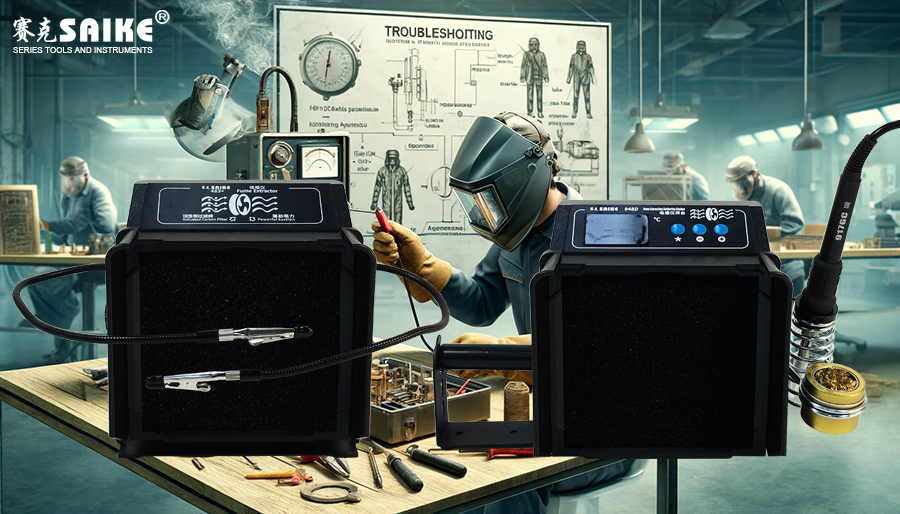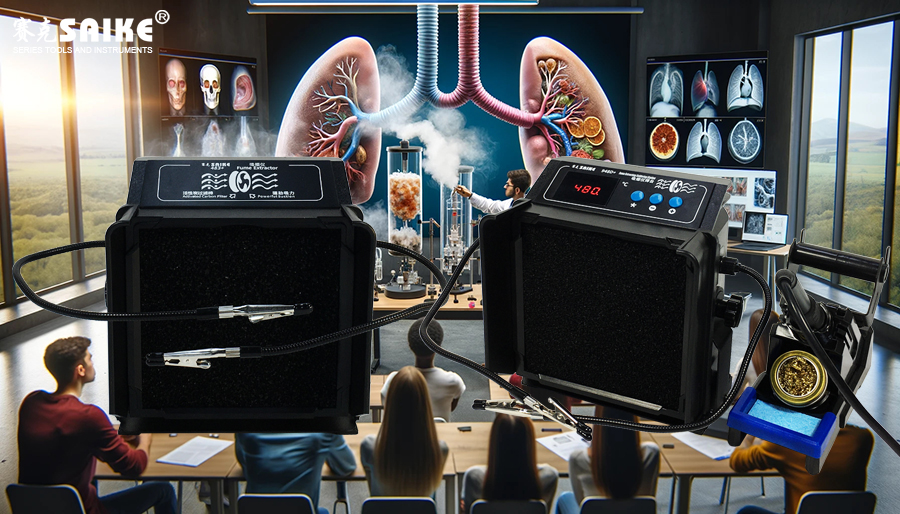
SK-YJ000XYY-KP 100024
To ensure continuous and reliable operation of the smoking apparatus in welding operations, mastering troubleshooting skills is crucial. This article will simulate several common smoking apparatus failures and their solutions to help operators effectively diagnose and solve problems, thereby reducing equipment downtime and maintaining work efficiency.
I. Common Faults and Troubleshooting Steps
Fault 1: Smoking Apparatus Won’t Start
Simulated Situation
The operator presses the start button, but the smoking apparatus does not respond.
Troubleshooting Steps
1.Check the power supply.
– Confirm whether the power outlet has electricity by using a test pen or trying to connect other devices.
– Check if the power cord and plug are intact without obvious breaks or wear.
2.Check the safety switch.
– Confirm whether the safety switch of the smoking apparatus has been triggered or is faulty.
3.Check the internal fuse.
– Inspect if the fuse inside the smoking apparatus has blown and replace it with a new one if necessary.
Fault 2: Significant Reduction in Suction Power
Simulated Situation
During operation, the suction power of the smoking apparatus decreases significantly, and the efficiency is not as good as before.
Troubleshooting Steps
1.Clean the filter.
– Check if the HEPA filter and pre-filter are clogged and clean or replace them regularly.
2.Inspect the air duct and suction nozzle.
– Clean the air duct and suction nozzle to ensure there are no foreign objects blocking them.
3.Examine the fan and motor.
– Check if the fan is damaged or blocked by foreign objects, and ensure that the fan blades are clean and rotate freely.
Fault 3: Abnormal Noise
Simulated Situation
The smoking apparatus produces unusual sounds during operation.
Troubleshooting Steps
1.Check the fixing screws.
– Inspect if the fixing screws inside the equipment are loose and tighten them if necessary.
2.Examine the fan blades.
– Confirm whether the fan blades are in contact with other components and check for noise due to wear or damage.
3.Lubricate the bearings.
– If the noise comes from the motor or bearings, consider lubricating them.
II. Fault Diagnosis and Handling Skills
1.Systematic observation.
– Observe the equipment operation before performing any maintenance, paying attention to sounds, smells, and other abnormal behaviors.
2.Use the right tools.
– Utilize appropriate tools for maintenance, such as screwdrivers and multimeters, to ensure safety and efficiency.
3.Follow the manufacturer’s guidelines.
– Adhere to the troubleshooting guide and maintenance recommendations provided by the equipment manufacturer to avoid causing further damage to the equipment.
III. Summary
Through troubleshooting simulation training for the smoking apparatus, operators can improve their understanding and maintenance ability of the equipment, ensuring efficient operation and workplace safety. Regular troubleshooting training and maintenance can not only extend the equipment’s lifespan but also prevent potential equipment problems during daily operations, thereby enhancing overall work efficiency and safety.


